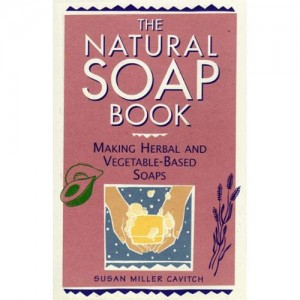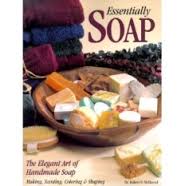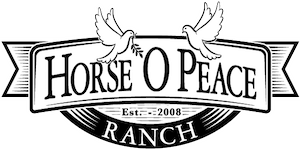Choosing a Recipe: Soap Saturdays
In the past few weeks we've covered everything from deciding what kind of soap you wanted to make, equipment, ingredients, fun ingredients for different variations, molds, and the only thing left is to get down to the business of choosing a recipe and making some soap. Once you make a batch, it will be a huge accomplishment that you will be proud to call your own (providing everything goes according to plan).
 There are a lot of recipes to choose from, and you won't know if you have a good recipe until you try it. When I began making soap 5 years ago, I read through lots of recipes, probably a few hundred, before I settled on the one I wanted to try. I decided to go with a recipe from a book called The Natural Soap Book : Making Herbal and Vegetable Based Soaps by Susan Miller Cavitch. There are a lot of good books with great recipes, so you might want to try something else, but this book described the types of soap that I could picture myself confidently making, and being proud of. Susan Miller Cavitch's book had descriptions, and drawings, and recipes, along with so many great tips. It was the perfect place to start, for me. I should warn you though, that this book only contains recipes for large batches of soap (40 bars, 4oz. each bar), so it might not be a perfect place for you to start if you want to try several different recipes. You'd have lots of soap to use before perfecting a batch (ask me how I know)!
There are a lot of recipes to choose from, and you won't know if you have a good recipe until you try it. When I began making soap 5 years ago, I read through lots of recipes, probably a few hundred, before I settled on the one I wanted to try. I decided to go with a recipe from a book called The Natural Soap Book : Making Herbal and Vegetable Based Soaps by Susan Miller Cavitch. There are a lot of good books with great recipes, so you might want to try something else, but this book described the types of soap that I could picture myself confidently making, and being proud of. Susan Miller Cavitch's book had descriptions, and drawings, and recipes, along with so many great tips. It was the perfect place to start, for me. I should warn you though, that this book only contains recipes for large batches of soap (40 bars, 4oz. each bar), so it might not be a perfect place for you to start if you want to try several different recipes. You'd have lots of soap to use before perfecting a batch (ask me how I know)!
Here is a recipe that I converted down to a 5 bar batch from The Natural Soap Book. For an easy mold, you can pour it into a square Ziplock plastic container:
Soap Essentials Bar (5 Bar Batch):
6oz. distilled water
59 grams sodium hydroxide
5oz. coconut oil
3oz. palm oil
8oz. olive oil
1 gelcap of Vitamin E
12 grams essential oil
 Another book I learned a lot from, and that I have on my soapmaking shelf for reference, is Essentially Soap: The Elegant Art of Handmade Soap by Robert S. McDaniel. This book fascinated me because it got into the science of soap making, had beautiful pictures, practical tips, and answered questions like, "Can I use crayons to color my soap?". This book has recipes for pet shampoo, body and facial bars, shaving soap, milk soaps, and a host of others. It is a fantastic book that is well written and covers topics that I've never seen in other soap making books.
Another book I learned a lot from, and that I have on my soapmaking shelf for reference, is Essentially Soap: The Elegant Art of Handmade Soap by Robert S. McDaniel. This book fascinated me because it got into the science of soap making, had beautiful pictures, practical tips, and answered questions like, "Can I use crayons to color my soap?". This book has recipes for pet shampoo, body and facial bars, shaving soap, milk soaps, and a host of others. It is a fantastic book that is well written and covers topics that I've never seen in other soap making books.
A lot of soap makers like to keep their recipes simple with few ingredients in the base oils. A common blend is to use the three oils of coconut oil, palm (NOT palm kernel) oil, and olive oil. This website by Summer Bee Meadow has a calculator for figuring how to use these three oils for whatever size container you want to use to pour your soap into. They also have a wealth of information on oils/fats to use, and they sell soap making supplies.
Some cold process soap making recipes online can be found below. Remember, most soap making recipes will be according to weight, so invest in a decent scale.
-Soap Queen
-From Nature With Love
-The Ponte Vedra Soap Shoppe, Inc.
-Handmadeology
Next week in our Soap Saturdays post, I'll cover mixing instructions, so come back and learn some more!
If you are interested in our previous Soap Saturdays posts...
-Soap Saturdays: The Beginning of a Soap Maker
-Soap Saturdays: Processes to Make Soap
-Soap Saturdays: Equipment (On Sunday)
-Soap Saturdays: Ingredients
-Soap Saturdays: Fun Ingredients
-Soap Saturdays: Molds (On Sunday, Again...)





